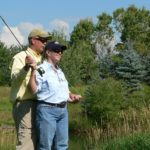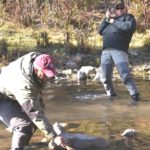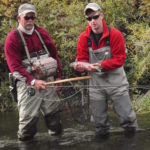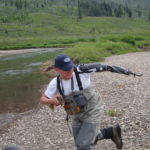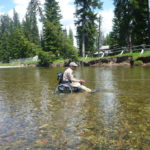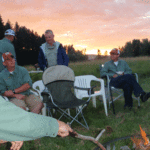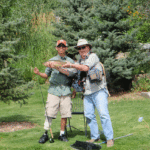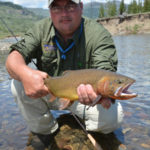
Past votes won’t assure the river herring’s future
Yes, in my last blog, I said that this week I’d address some of the misconceptions on slot limits and gamefish for striped bass. That’s not gonna happen, for a few of reasons. One is that, well, I’ve already done it in a prior blog, although apparently not thoroughly enough. So, I will indeed address this in the future… when it’s more appropriate. As I mentioned in my last blog ASMFC Moves on Striped Bass, in February the board will consider an addendum that would simply seek to reduce fishing mortality (adoption of the new, more conservative fishing mortality reference points). In May, a second addendum that would cover what regulations would get us to such a reduction will be considered. Given the latter is when the slot-limit discussion will likely take place, it’s probably more appropriate to wait until then to cover it here. Lastly, I’m not sure how I can justify writing for four consecutive weeks on striped bass without this becoming the John McMurray striped bass blog. There are indeed other issues out there. And this week I’m gonna cover a big one: uhm, striper forage. Okay, so this is related to striped bass, but there’s a much broader picture here.
Before moving forward, in case you didn’t read it, here is my blog on the last Mid Atlantic Council meeting (River Herring and Shad Lose at the Mid ) where we considered adding river herring and shad to our federally managed stocks. Perhaps more importantly here’s a darn good response to a post on Talkingfish.org written by a colleague and “recreational” council member. (note: scroll down to the end of the article to see the comment: To My Fellow Recreational Fishermen). I can’t say I disagree with some of what’s said there. It’s true that “Recreational fishermen are appointed to bring the perspective and experience of a recreational fisherman to the council and to insure that the interests of recreational fishermen are addressed,” that fishery resources “belong to every American” and that “Council members are sworn to protect the resource first with the interests of all of those that benefit from the resource being the very next priority.” It is also true that “We are to weigh all of the information and base our actions on what we believe to be the most reliable of that information” and that “a member has to respect each group’s concerns and try to formulate plans that work for everyone.” And I agree with the statements about moving on and holding the council’s feet to the fire.
Those are all good points. Yet, the response missed the most important point of all: As council members we have an overarching obligation to uphold the law – in this case the Magnuson-Stevens Fishery Conservation and Management Act – which clearly stipulates that we make decisions that provide for the greatest good of the nation.
It is pretty darn clear at this point that large numbers of river herring and shad are being caught in federal waters, and that such fish are badly in need of conservation and management, and if that’s the case, it looks like the law requires that we manage them under a federal Fishery Management Plan (FMP). Given all the data on the species, it’s difficult for anyone to credibly argue river herring and shad aren’t in a bad place. Sure, there may be some isolated recovering runs in northern New England, but they are the exception to the coast-wide trend. These species are unquestionably depleted and are caught and actually sold in large numbers so they are most certainly “in the fishery.” And while they are already being managed in state waters by ASMFC, these fish do spend most of their lives at sea, they are being taken incidentally at sea and they need to be managed at sea; in fact, Magnuson-Stevens seems to require that they be managed at sea. Yes, both New England and the Mid Atlantic Councils have implemented “catch caps” which would shut down the sea herring and mackerel fisheries if river herring or shad catch met or exceeded certain poundage limits, but without 100% observer coverage (or something close to it), and real measures to prevent net slippage/dumping of catch before it comes on board to actually be counted against those limits, the cap is simply unenforceable. Yes, there are some voluntary bycatch avoidance efforts being made by the sea herring and mackerel fisheries, but they are just that–“voluntary”– they have yet to be proven effective, and are no substitute for legally mandated, enforceable conservation measures.
While these are all points I’ve made before, the overarching point here is that this was not a case where a small interest group was petitioning for special protection. Managing river herring and shad under a federal FMP seemed to be clearly in the wide public interest, and arguably a legal requirement. So it’s a little bit irritating that the above referenced response seems to paint this as an environmentalist push to do something outrageous. Moving forward with a stocks-in-a-fishery Draft Environmental Impact Statement (DEIS) had broad and diverse backing, and lost by only one vote at the Council. The public comment/letters in the briefing book (over 37,000) showed overwhelming support and came not just from the environmental community, but from representatives of well-respected recreational groups, scientists, and even commercial fishing organizations. The only organization that provided written comment in opposition was a commercial fishing organization representing corporations with a direct financial interest in avoiding restrictions on the fleet. (And by-the-way, no environmental group truly involved in council deliberations, as far as I know, ever wanted to shut down the fluke fishery… and while there’s some truth to the dogfish comment, it’s another red herring as the best available science at the time suggested that a population collapse was imminent).
Protecting forage fish is unquestionably a priority for fishermen, because such fish are near the base of the food web and support the most important recreational as well as commercially valuable species. A vote in favor of managing river herring and shad under a federal FMP in October, to me, would have represented a real effort to control at-sea catch. It would have honored the conservation tradition of generations of anglers and the ongoing work and sacrifices of current anglers up and down the Atlantic Coast to conserve river herring and shad. I do understand the justification for those who voted against it, but I couldn’t help but see a vote to manage them under a federal FMP as recreational priority, and somewhat of a litmus test. And I’ve gotta say here that while of course we have to all work together to develop solutions that work best for everyone, a recreational seat does, indeed, exist to present and highlight, to a large extent, the interests of the recreational community, within the law of course, just as an industry seats frequently highlight commercial fishing interests. Regardless, by taking real tangible steps to conserve and protect forage fish, you support conservation of other managed stocks important to anglers and commercial fishermen in an exponential way.
At this particular meeting, we weren’t even voting to make river herring and shad federally managed stocks, just to move forward with a DEIS that would have simply given us a full analysis of what it would take to do this, enabling the council to make an informed decision. As the response noted, a council member is obligated to decide issues based on “all of the information” and to give the greatest weight to “the most reliable of that information.” I’m still having a hard time understanding why anyone would vote against a process designed to provide the council with more and better information about available management alternatives. Sure it would have taken resources to develop such a document, but the public made it clear (with over 37,000 comments) that this was a priority worthy of resources. Instead, we now have an obligation to develop a “working group”, which, if it is to accomplish anything, would likely require resources as well—except with no commitment to them. Moving forward with the DEIS was the next logical (and likely legally required) step in weighing all the information, and I thought we had formed a consensus to do just that when we voted to move forward with Amendment 15 in June of 2012.
At any rate, enough rehashing all this stuff. I think at this point, we all understand each other, and to some extent it doesn’t really matter any longer. Now that the council’s decision has been made (unless it is legally invalidated in court, where it is currently being challenged) we need to move forward. It’s now imperative that we focus on the observer coverage issue (getting people on the boats to gage what the incidental river herring and shad catch really is). We already voted such 100% coverage last year, but it’s pretty much a given at this point that NOAA Fisheries will say that even with industry sharing the costs, it’s impossible given funding constraints. We will almost certainly have to move forward with a provision that would require that the small mesh net industry pay 100% of observer costs if we are to hope for significant coverage. In my opinion this is not unreasonable given that these fish are a public resource and we are allowing the large scale harvest of them for profit. The people gaining from such a public resource should pay whatever price is required to make sure they are doing it sustainably while minimizing incidental catch. I hope industry will step up and support such a proposal, and the initial indication is that they will. The council also needs to pass a strong “framework” to address unobserved dumping or “slippage,” (releasing the net so that the catch cannot be accounted for). Allowing the net to be “slipped” before it can be sampled by observers undermines the potential for the cap to be meaningful; slippage allowances should really be limited to only true emergencies.
Yes, I was bummed that instead of going with the stocks in a fishery model, the council voted in favor of a motion to move forward with a “working group” to address river herring and shad incidental catch. Because any recommendations coming out of such a working group will not have the force of law. And really, history has shown that councils avoid making hard decisions unless the law requires them to. With the obvious limitations in funding these days, I can’t help but see such an unfunded mandate in a rather dim light. But perhaps I’m being too cynical here. Indeed, this is a good step in the right direction. Given the fact that the council will regularly review the process, and the fact that this working group has three years to show results before we consider the stocks-in-a-fisheries model again, I think there’s some real motivation for this working group to come up with something tangible. In particular, I hope it can further develop the catch cap to serve as an enforceable science-based annual catch limit, in the way it would under law. As the above referenced response notes, the public has to hold the council’s feet to the fire on this one though. And I suspect they will.





